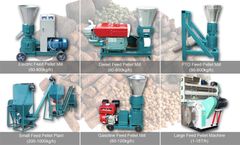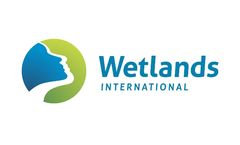Cattle Grazing Articles & Analysis
12 articles found
It is fed to especially pasturing animals, for instance, sheep, goats, horses and cattle when grazing is unobtainable due to harsh climatic conditions. Pellets are renewable organic matter made from compressed hay and other biomass, pellets are used to balance the nutrition for grazing animals. Also, the pellets are very nutritious and easy to ...
Nutrient source build-up and organic cycle The source of nutrients in a lake or reservoir can be diverse; some common examples include agricultural run-off, domestic sewage, pollution through rivers flowing into the reservoir, cattle grazing around a reservoir, and organic materials that may end-up in a reservoir. ...
A second solution lies in better ecological planning. Mostly because of cattle grazing, Latin America has millions of hectares of existing deforested and degraded land. ...
ByEnsia
To make the delta suitable for cattle grazing, the natural flow of the river and streams has been shifted by draining, land filling and the construction of dikes. "This increases the negative effects of floods and undermines adaptation to climate change. Also, the use of great scale cattle practices led to important fires in 2008, which affected ...
During 170 years, it has been used productively for sheep and cattle grazing, but with significant detrimental impact on the natural systems. ...
Approximately 35 cow–calf pairs grazed 194 ha of grass forage and had direct access to the creek in the spring and summer. During winter, the cattle were fed adjacent to the creek at an old bedding site. The practice changes included off-stream watering, bedding site relocation and fencing for rotational grazing. ...
The Sierra Nevada Mountain range serves as an important source of drinking water for the State of California. However, summer cattle grazing on federal lands affects the overall water quality yield from this essential watershed as cattle manure is washed into the lakes and streams or directly deposited into these bodies of water. ...
The increased cost of inputs has led livestock producers in the southeastern United States to use alternative management practices to supplement beef cattle (Bos spp.) on pastures. The objective of this study was to evaluate the performance of beef heifers grazing stockpiled limpograss [Hemarthria altissima (Poir.) ...
The integrated system included two phases: (i) a corn and oat (Avena sativa L.) cash crop rotation, grown in summer, and (ii) post-harvest grazing of corn stover with annual cover crops. Over a 4-yr period (2004–2007), weed biomass was approximately 4.5 times higher in the conventional system (8.4 g m–2) compared with the integrated system (1.8 g m–2). Weed species composition ...
Six hard red (2137, Jagalene, Jagger, OK101, Stanton, and Thunderbolt) and six hard white (Burchett, Lakin, NuFrontier, NuHills, NuHorizon, and Trego) winter wheat (Triticum aestivum L.) varieties were evaluated for grain yield and quality in southwestern Kansas in 2004 and 2005. Cattle commonly graze wheat in this region from late November to mid March in a ...
Moench] are typically grown in a 3-yr wheat-sorghum-fallow (WSF) rotation that may be intensified by integrating cattle (Bos taurus) grazing. Suitability of grazing dryland crops in the WSF rotation has not been evaluated. Our objectives were to quantify (i) cattle gain during limited grazing of dryland wheat and ...
In Germany and other countries of Central Europe, biodiversity in the rural countryside is best conserved by applying traditional land-use methods, such as low input sheep and cattle grazing. These are very uneconomical according to conventional accounting and can only be carried out at present by benefitting heavily from the subsidy schemes of the CAP. ...







